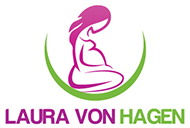With fertility clinics starting to re-open, many patients are experiencing mixed emotions. There is a sense of relief, excitement, anticipation and anxiety as fertility treatments resume. For those who are scheduled for an embryo transfer, we are here for you throughout the entire process. Think of us as doulas for your transfer day!

Let’s Get Started
Whether your transfer is fresh or frozen, our goal is to optimize your uterine environment to support healthy implantation. As we know how stressful the dreaded ‘two-week-wait’ can be, we want to support you mentally and physically during this emotional time. Today we are going to cover a few strategies that we use to best prepare your body for your upcoming embryo transfer. This post was done in collaboration with Dr. Stefanie Trowell, ND at Focused Fertility. We have numerous fertility resources available on our website, be sure to check them all out.
Diet
In Traditional Chinese Medicine (TCM), infertility can present as a diagnosis called cold in the uterus. It typically presents as a thin uterine lining that does not respond appropriately to hormonal stimulation. We need to focus on improving blood flow and warming up that uterus to make it a cozy and hospitable environment for the embryo. This means:
- Avoid energetically cooling foods: Smoothies, ice cream, dairy products, ice-cold drinks, excessive amounts of raw fruits and vegetables. If you love your morning smoothie, warm it up with some added cinnamon and ginger, cooked sweet potato or pumpkin and a warm cup of tea on the side.
- Minimizing exposure to excessively sweet flavours and sugary foods: This can weaken the ‘kidneys’, which in TCM are vital to fertility and reproductive health
- Focus on foods that build yin and support bloodwork: Warm steel-cut oats, millet, lentils, beans, cooked vegetables, baked apples and pears, walnuts, tahini and cinnamon. We love this Baked Oatmeal Recipe and Baby-Makin Brownies.
- Enrich your diet with foods to help increase blood flow and bring warmth to the uterus: Soups, stews, baked casseroles, and ginger tea. Be sure to try this delicious Vegan Lentil Soup from fellow fertility warrior Abbey Sharp.
- Warm feet=Warm womb. Bring a nice big pair of cozy socks to wear during your embryo transfer. I recommend bringing a lot of layers and clothing options as the operating room can be freezing at times!
- No alcohol, at all. I mean it. Not a drop. Even a single glass of alcohol in the month prior has been shown to significantly reduce IVF success rates. This goes for both men and women.
Exercise
Now that we have the right nutrients in your body, we need to get your moving. Regular physical activity can help improve blood work, regulate your hormone levels and manage stress. Ladies, I’m not talking about training for a marathon. It can be as simple as a 30-minute walk every day after dinner. A yoga class in the morning. Or a light strength-training session a few times per week. This is not the time to overdo it. Avoid any jarring or high-impact movements, especially after your embryo transfer. No heavy lifting (including small children!), and no deep squats or bending over. Get outside, take some deep breaths of fresh air and feel your anxiety melt away with the sun.
Should I be detoxing my body before my transfer?
Nope! Now is not the time to try and start a detox diet or supplement protocol. When our body goes through strong detoxification, we pull all the junk out of our cells and into circulation. Our body then has to deal with that junk and try to remove it through our organs of elimination such as our liver and kidneys. We don’t want all this junk freely roaming around when we are actively trying to get your little embaby to implant. We recommend avoiding any detox products or protocols leading up to and after your transfer.
Mindfulness
I think this aspect is often overlooked, but so critically important. There is so much outside of your control during this process, and learning to let go has been shown to improve IVF success. I’m not talking about letting go of your ultimate go, I mean letting go of the things outside of your control and making peace with yourself. It can be mentally exhausting when your mind is running on overdrive and your thoughts are racing all day. Focus on realistic affirmations, create a vision board of positive thoughts, write a list of your favourite things, and trust in your body. What you practice grows stronger, let’s weed your garden of negative thoughts and power on words of encouragement.
Acupuncture
Hands down, acupuncture of one of my tops recommendations for improving your chances of conceiving. I have seen this make a big difference in outcomes, Acupuncture assists in:
- Encouraging healthy blood flow to the uterus
- Promoting relaxation while reducing stress
- Calming the mind and nurturing deep sleep
- Regulating and bringing balance to your body’s hormone
Each acupuncture treatment is tailored to your specific needs, no two treatments are ever the same! Ideally, I like to start acupuncture treatments three months prior to any fertility treatments. As your transfer date approaches, I will perform 1-2 treatments per week leading up to your transfer, acupuncture the day of your transfer and during the two-week-wait. Acupuncture the day of your transfer, when performed for 30 minutes before and after, has been shown to improve the chances of pregnancy by up to 65%. Acupuncture is best performed by a Naturopathic Doctor or licensed Acupuncturist who has a strong clinical focus in fertility and reproductive care.
Supplements
I’m not even sure where to begin. Just google, ‘supplements for fertility’, the list is never-ending. That does not mean, however, that list is right for you. Even if something is natural, it does not mean it is safe or indicated for every person. This is where expert advice is absolutely needed to ensure proper supplementation. Aside from supplements to improve egg and sperm quality, there are specific nutrients, herbs and nutraceuticals that can have a positive impact on uterine lining and health and encourage implantation. A few that we love to focus on our
- L-theanine: An amino acid derived from green tea. L-theanine has been shown to have anxiety-reducing effects in both rat studies and humans. Supplementation has minimal side effects and is safe in pregnancy. It can be very helpful for increasing levels of the relaxing neurotransmitter GABA in the brain.
- Omega-3 fatty acids: Higher levels of Omega-3 fatty acid has been linked to high chances of conception. One cool study took this a step further by measuring serum levels of fatty acids in the blood of women trying to conceive. For every 1% increase in healthy omega-3 fatty acids, there was an 8% increase in the chances of pregnancy and live birth. If women replaced just 1% of their diet with omega-3s instead of saturated fats, live births also increased. Healthier options include olive oil, avocado oil, flaxseed oil, walnuts, chia seeds, wild salmon, trout and sardines. Avoid excessive intake of saturated fats and omega-6 fatty acids: shortening, hard margarine, conventional butter, processed foods, canola and sunflower oils.
- Vitamin D: Plays a crucial role in decidual reaction, which is the fancy medical term for when the blastocyst makes contact with the wall of the uterus and begins to implant. Adequate levels of Vitamin D are needed for this reaction to occur, and higher levels of Vitamin D has been associated with improvements in IVF outcomes
As always, this information is for educational purposes only and not to be interpreted as medical advice. You should always speak to your ND before taking anything!
References
Juneja, Lekh Raj, et al. “L-theanine—a unique amino acid of green tea and its relaxation effect in humans.” Trends in Food Science & Technology 10.6-7 (1999): 199-204.
Lerchbaum, Elisabeth, and Barbara Obermayer-Pietsch. “Vitamin D and fertility: a systematic review.” Eur J Endocrinol 166.5 (2012): 765-778.
Chiu, Y-H., et al. “Serum omega-3 fatty acids and treatment outcomes among women undergoing assisted reproduction.” Human Reproduction 33.1 (2018): 156-165.

